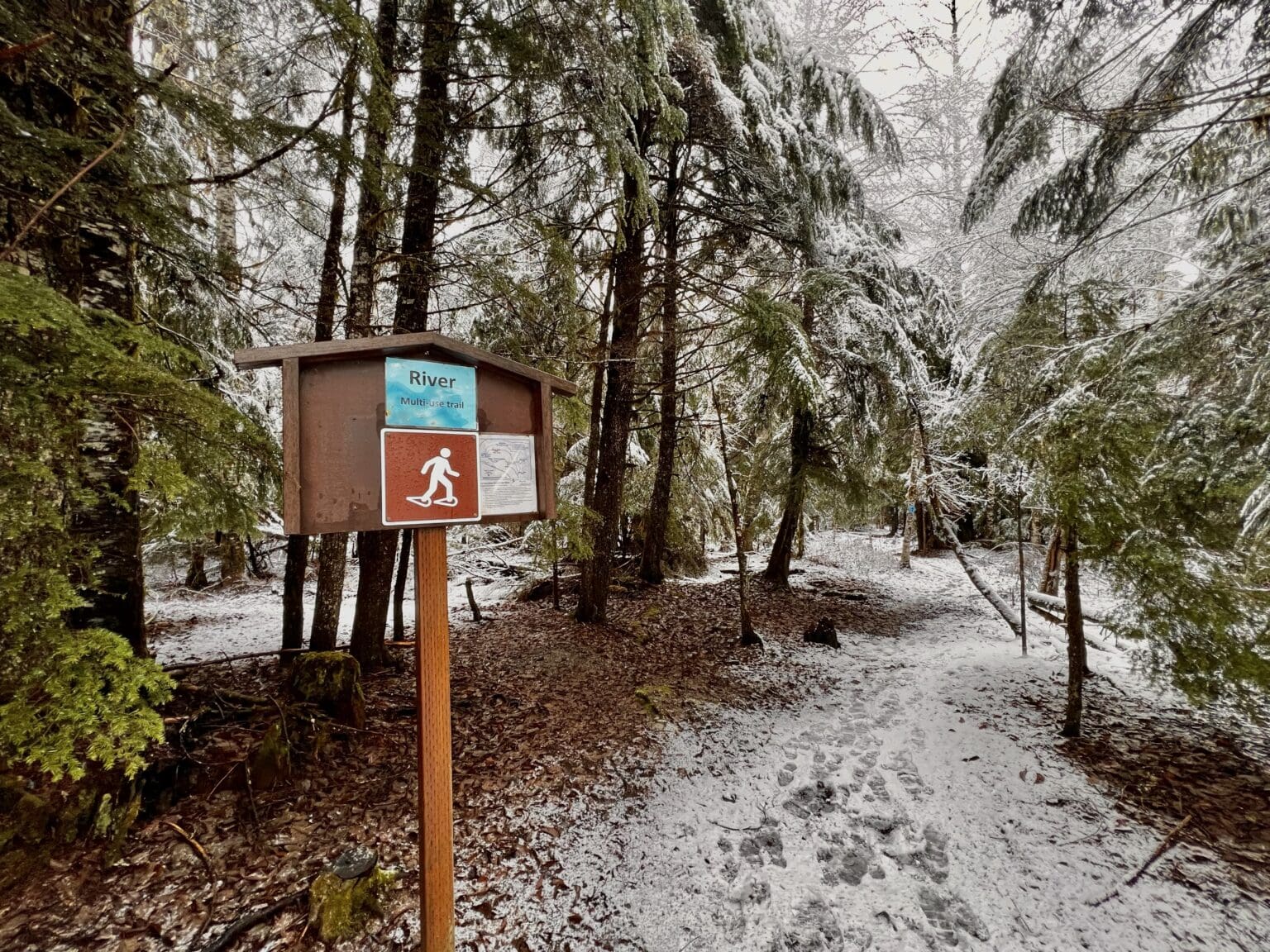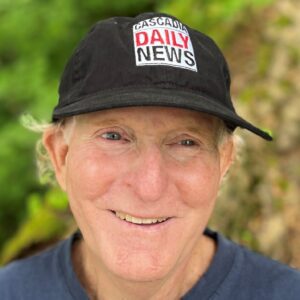Nordic skier Jim Rhodes remained skeptical that winter would make a grand entrance this week no matter what the forecasts suggested.
“I’ll believe it when I see it,” said Rhodes, one of nine volunteer members of Washington’s Winter Recreation Advisory Committee.
No one could blame the Whatcom County resident for refusing to accept the word of the National Weather Service, which issued a blizzard warning starting Tuesday, Jan. 9 as snow fell across the Cascades. The seven-day forecast had changed recently more times than stock market tabulations.
The day after talking to Rhodes, I drove to the Salmon Ridge Sno-Park where his Nooksack Nordic Ski Club maintains 15 miles of non-motorized trails. He told me the parking lot and paths were ready — if the snow ever arrived.
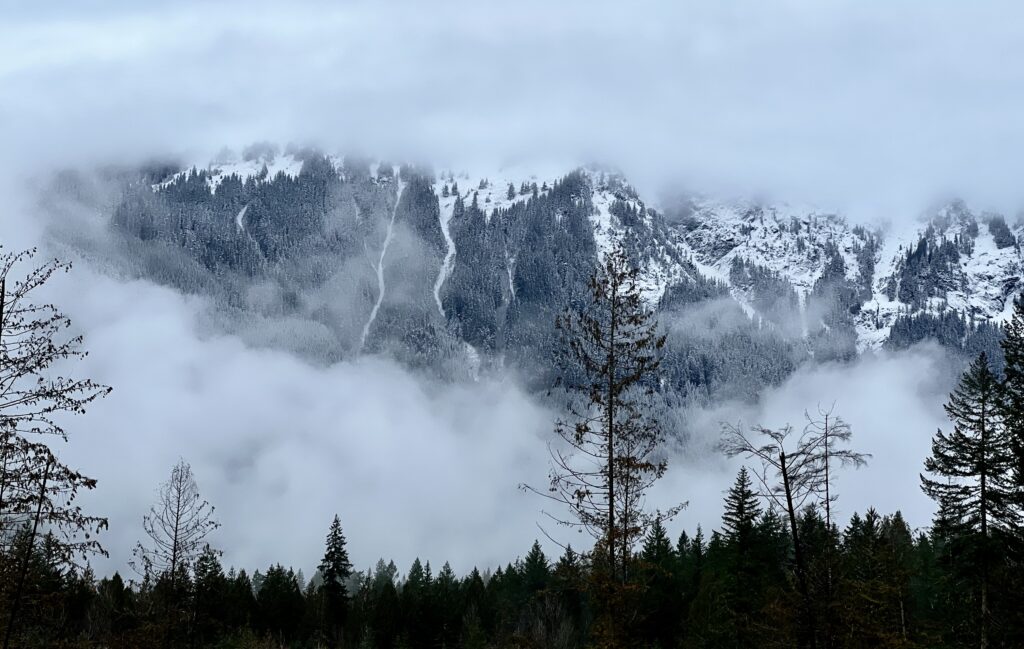
Car tires left messy tracks through the main parking area on Saturday, Jan. 6. The ungroomed cross-country ski trails seemed like a “maybe,” at best. The snowshoe paths had patches of leaves and dirt next to pools of water.
But everything changed by Monday, Jan. 8, as a rain/snow mix fell in Bellingham, raising the spirits of the powderhounds, Nordic skiers and shoers whose patience had frayed during a frighteningly warm December.
“It has been busy, but everyone has a smile on their face,” Whistler Mayor Jack Crompton said Wednesday, Jan. 10.
Crompton told Cascadia Daily News he had enjoyed skiing this week in some of the deepest snow in recent memory.
The Mt. Baker Ski Area reported receiving more than 2 feet of new snow on Monday and Tuesday.
The nonprofit Methow Trails reported on Wednesday staff had enough snow to groom the network of its famous Nordic trails.
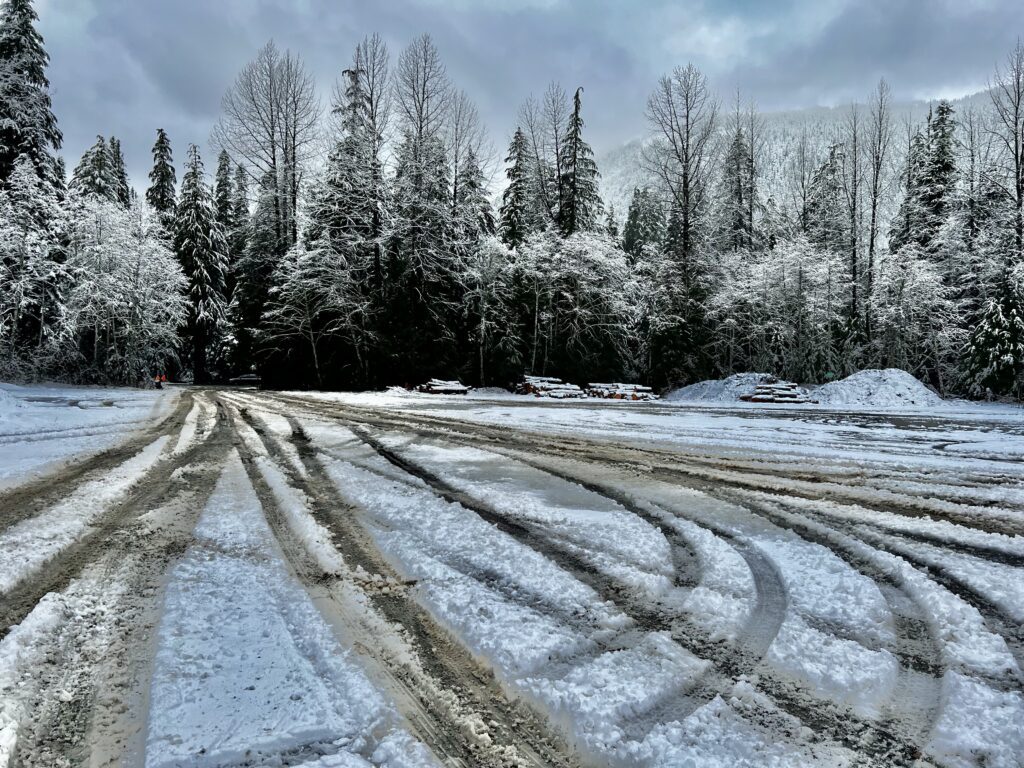
The week’s inclement weather was welcomed by winter sports recreationists after a dismal end to 2023. Mountain resorts from Whistler Blackcomb to California suffered during the holidays because of a lack of snow. Instagram videos showed discouraging lines of Whistler skiers waiting on the pavement to catch the gondola to higher elevations.
Whistler has more than 5,000 feet of vertical terrain, which means “when the rest of the Pacific Northwest isn’t skiing, we are,” Crompton said. “The projections for this place is that size allows us to be more resilient over time. As climate change progresses, Whistler will be one of the places that will handle it best.”
The week’s storms are just the start of what Crompton predicts will be a great season.
“The Northwest is known for catching a backup when there has been a low-tide start,” said Jordan Elliott, president of the Pacific Northwest Ski Areas Association. “We have a long winter ahead and plenty of spring riding we can look forward to.”
The alpine ski industry has to stay optimistic, particularly this season when November and December recorded one of the worst snowpack levels in history.
State officials called 2015 the year of the “snowpack drought” when the level was 50% of normal by the first week of January.
The Washington Department of Ecology reported even lower levels this season — 47% of normal to start 2024.
Elliott’s optimistic prediction of a late winter rebound with El Nino conditions?
“El Nino years are typically warmer and wetter,” said Jimmy Norris, Ecology’s water resources spokesman. “Nobody is talking about a late season.”
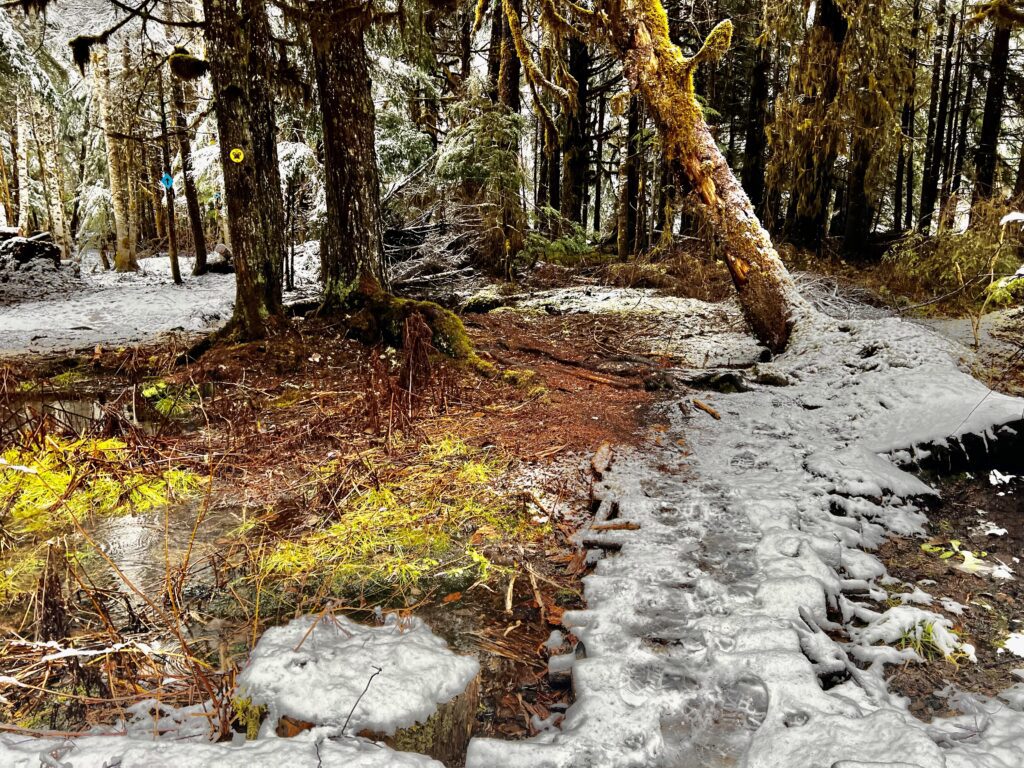
He added it will take more than the latest potential storms to catch up by the season’s end in April.
“If we had more snow from now until April than we get in 70% of years, we’d still come up short in a lot of basins,” Norris said.
Snow enthusiasts might be buoyed by what happened in 1990. January started at 42% of the normal snowpack but ended up reaching the yearly average total.
“It could happen,” Norris said.
However, weather models suggest a snow drought will occur 40% of the winters in the era of climate change, Norris added.
The skis, boards, snowshoes and snowmobiles might sit in storage for longer periods, leading to existential questions about the future of winter sports activities.
Jessica Lundquist, a professor of civil and environmental engineering at the University of Washington, published a study with colleagues in the fall showing the amount of snow on the ground by Jan. 1 can help predict the season total of a specific area in some western states.
She said the lack of snow by the turn of the new year bodes poorly for Washington’s warmer locales because the wintry mix of rain and snow is more likely to melt when reaching the ground.
“The west slope [of the Cascades] is looking pretty abysmal,” Lundquist said in an email.
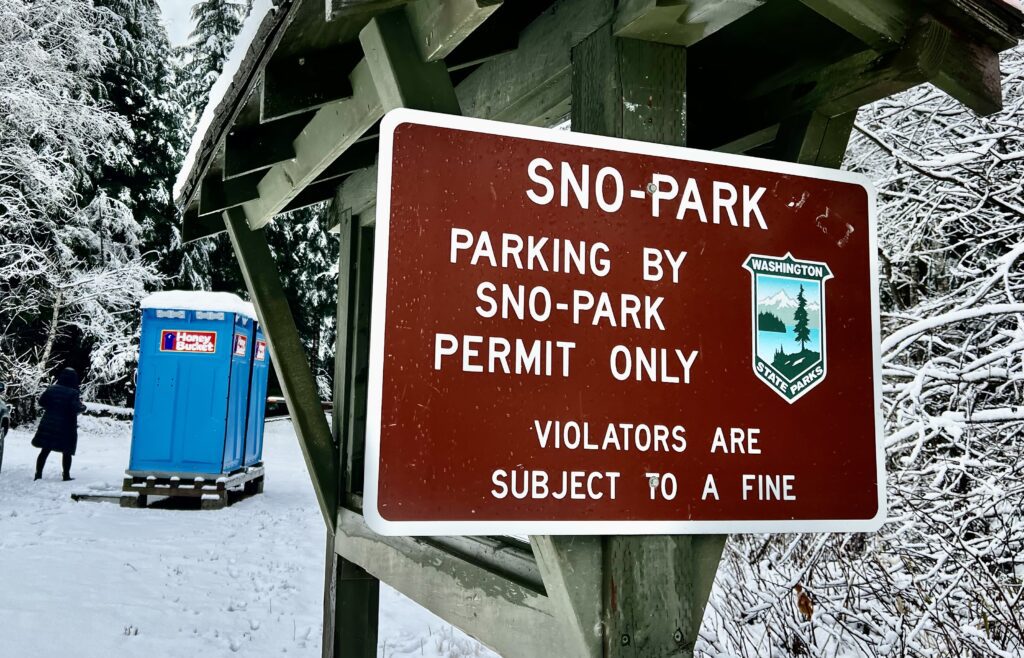
Alpine and Nordic skiing, snowboarding and snowshoeing anchor Washington’s winter recreation. But it also includes snowmobiling, tubing, sledding, fat tire cycling and ski jumping.
John Baranowski, chair of the state’s Winter Recreation Advisory Committee, said the popularity of Nordic skiing and snowshoeing has increased since the coronavirus pandemic in 2020.
He said Sno-Park permit sales doubled in the pandemic year after having been flat for the four previous seasons.
Baranowski, part of the Yakima Ski and Snowshoe Council, said sales still run 70% or more from the pre-COVID days.
The sudden popularity turned Washington’s Sno-Park program into an ATM. It received almost $2 million in revenue from permit sales during the 2020 peak.
The state requires permits from Nov. 1 to April 30 at its 120 Sno-Parks.
Four of the parks are located along the Mount Baker Highway: Salmon Ridge, Glacier Creek and Canyon Creek roads, and the Mount Baker Ski Area.
The Nooksack club grooms Hannegan Road for a mile, but it is not a Sno-Park. Other parks in Whatcom County are the Anderson Creek/Watson snowmobile area and the Shadow of the Sentinels non-motorized trails in Baker Lake.
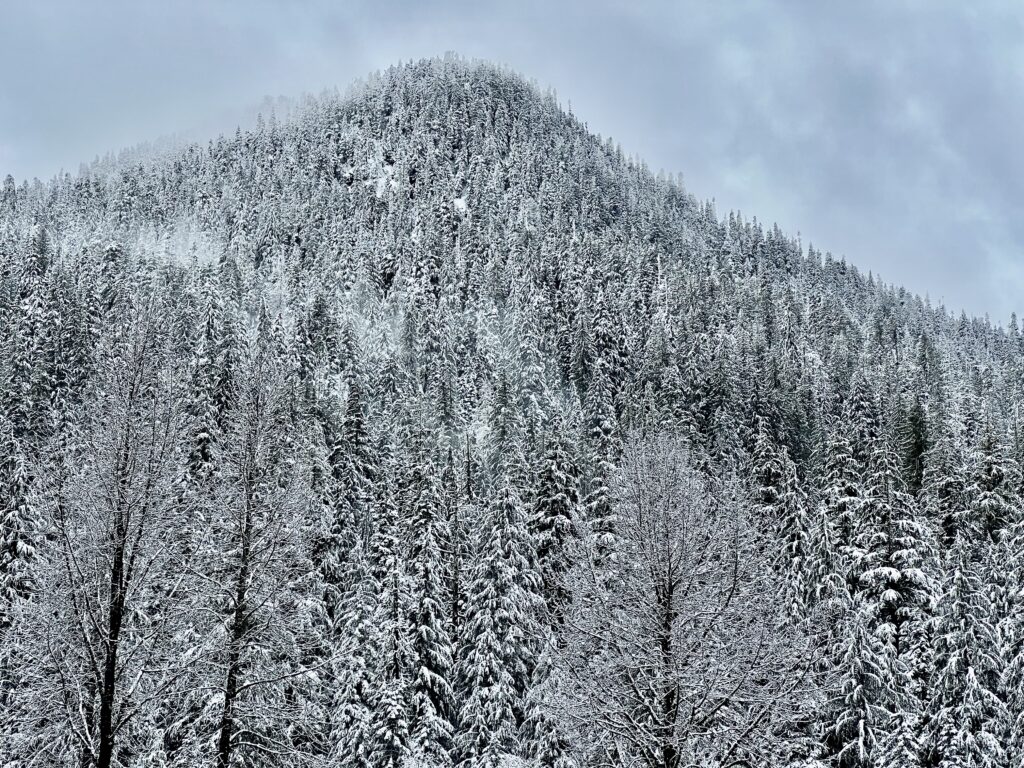
Skagit County has two Sno-Parks but other places along State Route 20 might work for non-motorized fun if enough fluffy stuff falls.
Permits cost $25 for a day or $50 for a season. The state also charges an extra $70 for a special groomed sticker for eight parks.
The advisory committee uses the funds to groom trails, maintain parking lots and buy new equipment for Washington State Parks. Volunteers from local cross-country ski and snowmobile clubs keep the parks in good shape.
Rhodes, 75, is wary of the funding system.
“If there is no snow, then nobody buys permits, and then next year there is no money,” he said.
The committee spent a lot of its backup funds in 2023, Rhodes added. The 2024-25 budget needs the latest storms, and more, to draw people to the parks.
Most people buy permits just ahead of skiing and shoeing. I admitted to Rhodes I am waiting for snow before plopping down $50 for a season pass.
“You know who else hasn’t bought their pass?” Rhodes asked. “Me.”
Elliott Almond’s outdoor column appears monthly. Email: elliottalmond4@gmail.com.

